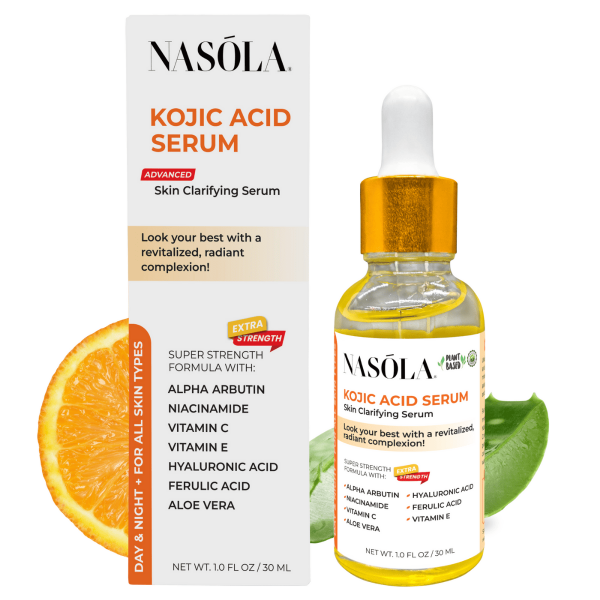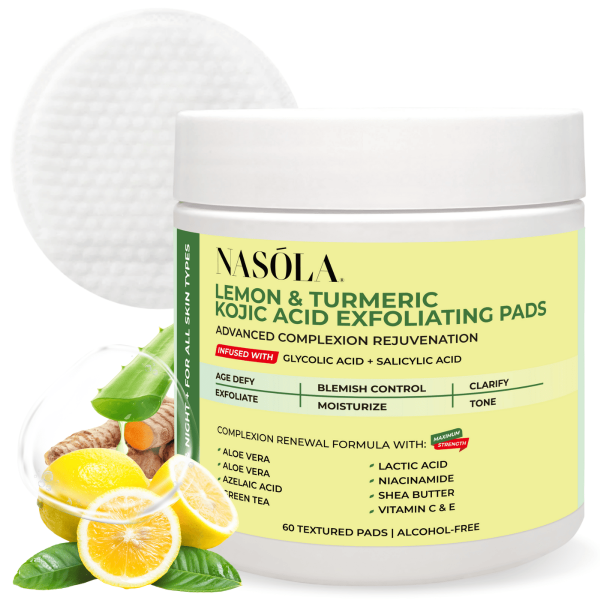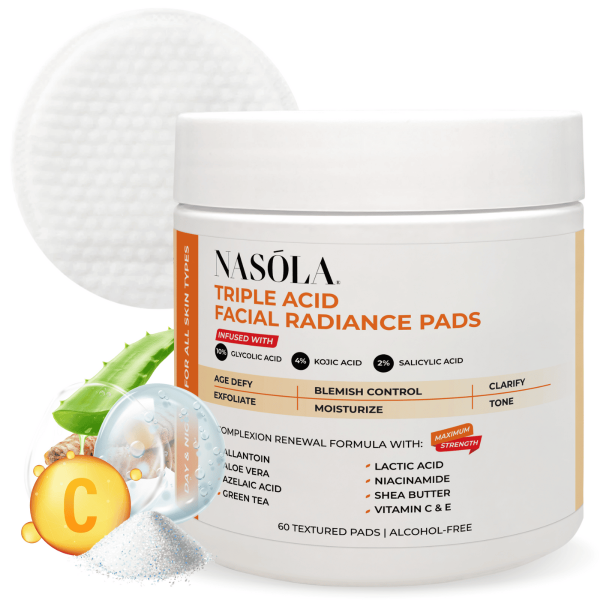Hyperpigmentation azelaic acid before and after stories always catch my eye. Why? Because they’re often filled with quiet triumphs—wins that look like a fading spot, a clearer jawline, or a smoother forehead.
If you’ve stared at your own complexion and wondered when those stubborn dark spots might just take a hike… welcome. You’re not alone, and you’re exactly who I wrote this for.
Azelaic acid is one of those rare skincare ingredients that works hard without shouting. It’s steady. Consistent. Gentle—but powerful.
And lately, more and more glowing results are popping up thanks to combinations with kojic acid, glycolic acid, and (yes please!) turmeric.
As someone who swears by streamlined, smart skincare—let me introduce you to a few of our fan-favorite helpers: Triple Acid Facial Radiance Pads, Lemon Turmeric Kojic Acid Exfoliating Pads, Kojic Acid Serum, and Kojic Acid Facial Toner.
Let’s walk through what YOU can realistically expect—visibly, emotionally, and practically.
- Understanding Hyperpigmentation Azelaic Acid Before and After Transformations
- Ingredient Focus: Azelaic Acid’s Role in Skin Brightening
- How to Use Azelaic Acid for Optimal Before and After Results
- Real Hyperpigmentation Azelaic Acid Before and After: What You Can Expect
- Enhancing Results with Kojic Acid, Turmeric, and Glycolic Acid
- Common Mistakes to Avoid When Treating Hyperpigmentation
- Skincare Routine for Long-Term Maintenance After Fading Hyperpigmentation
- Conclusion
- Frequently Asked Questions (FAQs)
Understanding Hyperpigmentation Azelaic Acid Before and After Transformations
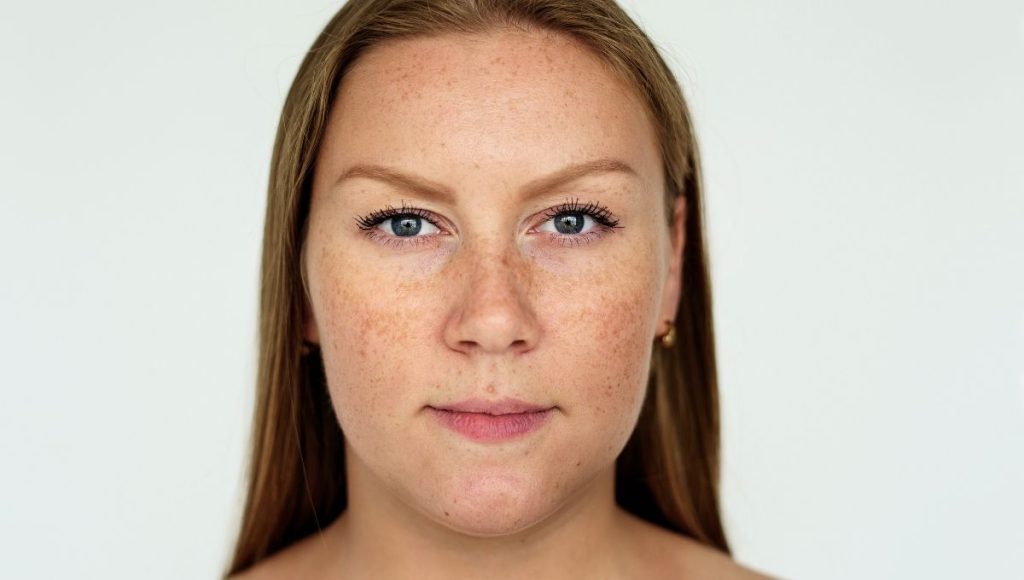
Seeing your “before” skin improve to an enviable “after” starts with understanding what’s happening beneath the surface. The journey from stubborn discoloration to clarity doesn’t begin with a miracle cream—it starts with knowing the why.
What Is Hyperpigmentation and Why Does It Happen?
Hyperpigmentation pops up when melanin production goes haywire. Triggers like sun exposure, hormones, skin injuries, and breakouts create hotspots for dark marks to form.
Whether it’s melasma, sunspots, or the aftermath of acne (aka post-inflammatory hyperpigmentation or PIH), it all boils down to excess pigment piling up unevenly.
Here’s what often fuels hyperpigmentation:
- UV radiation: Sun exposure is a top offender for dark spots.
- Hormonal triggers: Changes during pregnancy or from birth control can lead to melasma.
- Post-acne marks: Even a small pimple can leave a dark legacy.
- Skin inflammation: Eczema or harsh scrubbing can cause PIH.
So… what’s the fix?
How Azelaic Acid Works to Fade Discoloration
Azelaic acid is a quiet force. It tackles hyperpigmentation at the root by stopping tyrosinase—an enzyme responsible for pigment production.
Here’s why it’s a favorite:
- Regulates melanin without harshness
- Anti-bacterial and anti-inflammatory properties
- Safe for all skin tones and types
- Minimally irritating compared to stronger acids
Its bonus magic? It’s ideal for people with sensitive, acne-prone skin who want more evenness without the sting.
Ingredient Focus: Azelaic Acid’s Role in Skin Brightening

Let’s get clear: azelaic acid is not your average brightener—it’s your skin’s chill, dependable best friend. But when you team it up with other skin-loving ingredients, the results can be STUNNING. Yep, this is where chemistry meets glow-up magic.
Azelaic Acid vs. Other Brightening Agents
We all know the popular crowd—Vitamin C, glycolic acid, kojic acid. These agents work in slightly different ways, sometimes more aggressively than azelaic acid.
But azelaic acid holds its own because:
- It’s gentler than glycolic acid
- Won’t oxidize like unstable Vitamin C
- Less sensitizing than many retinoids
- Has dual power: brightening and acne-fighting
The result? Skin clarity without the red flags.
Pairing Azelaic Acid with Kojic Acid and Glycolic Acid for Maximum Results
You’ve got the gentle warrior (azelaic acid). Now bring in the tag team—kojic and glycolic.
Together, they:
- Kickstart cell turnover and keep it going
- Break up clusters of dark pigment
- Lighten discoloration with speed
- Improve ingredient penetration
Try the Triple Acid Facial Radiance Pads that combine glycolic, lactic, and salicylic acids. These work beautifully with azelaic acid, creating a smoother surface for absorption and quicker results.
Glow-on-a-mission? This is it.
How to Use Azelaic Acid for Optimal Before and After Results
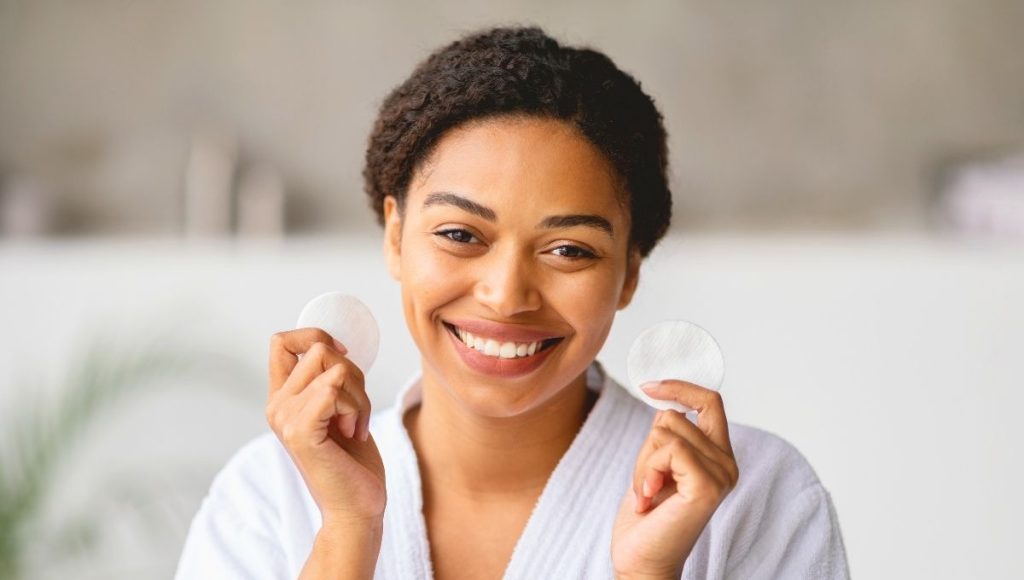
Consistency isn’t just a skincare tip—it’s the backbone of transformation. To really see “hyperpigmentation azelaic acid before and after” magic happen, you need a method. And no, it doesn’t have to be 13 steps long (thank goodness).
Step-by-Step Skincare Routine
A bulletproof routine looks like this:
- Cleanser – Gently wash with a non-abrasive cleanser
- Toner – Try Kojic Acid Facial Toner to prep, balance, and open the way
- Treatment – Apply azelaic acid (or combine with serums like our Kojic Acid Serum)
- Moisturizer – Lock in moisture and calm irritated spots
- Sunscreen – Critical for healing and preventing more pigment
Stick to this twice daily and give it time—at least 4 to 8 weeks.
Things worth having don’t always pop up overnight 🙃
Best Time of Day to Apply Azelaic Acid
Azelaic acid plays well with both sun and moon.
- AM Use: Pairs perfectly with SPF, defends against free radicals
- PM Use: Absorbs while you sleep and reduces overnight inflammation
Whichever you choose, consistency > timing.
Real Hyperpigmentation Azelaic Acid Before and After: What You Can Expect

Real people. Real skin. Real results.
These lived-in experiences offer more than marketing ever could. Want to know if it’s really working? Check the mirror after Week 6 😉
Timeline of Visible Results
Patience is your secret serum.
- Week 1–2: You may see slight purging or flaking
- Week 4–6: Spot fading becomes not just visible—but satisfying
- Week 8+: Smoother texture, even tone, smaller pores… SO satisfying
Pro tip? Use Kojic Acid Serum for targeted spot work alongside azelaic acid to drive faster—yet still gentle—improvements.
User Testimonials and Typical Outcomes
Most users notice:
- Fewer, faded dark spots
- Improved redness
- Less bumpy, inflamed acne areas
- Radiance that feels effortless
It’s like adding a skin therapist into your routine—without an appointment.
Enhancing Results with Kojic Acid, Turmeric, and Glycolic Acid

Let’s talk reinforcements. Adding kojic acid, turmeric, and glycolic acid to the mix can make basic azelaic acid results feel next-level. Think high-definition clarity, not filtered glow.
Kojic Acid: A Trusted Companion for Hyperpigmentation
Derived from mushrooms (yes, really), kojic acid slows pigment production and amplifies other ingredients.
Why it matters:
- Synergizes beautifully with azelaic acid
- Great for sunspots and melasma
- Fades dark marks without bleaching
- Works in serums, toners, and exfoliating pads
Add it in slowly but consistently.
Turmeric & Glycolic Acid: Antioxidants + Exfoliation Power
Turmeric soothes your skin while glycolic clears the way.
Together they:
- Brighten dull, uneven spots
- Calm inflammation (especially with turmeric)
- Exfoliate to allow fresher cells through
- Speed up skin turnover cycles
Try Lemon Turmeric Kojic Acid Exfoliating Pads for a once-or-twice-weekly exfoliation boost that’s natural, effective, and backed by those golden ingredients.
Common Mistakes to Avoid When Treating Hyperpigmentation
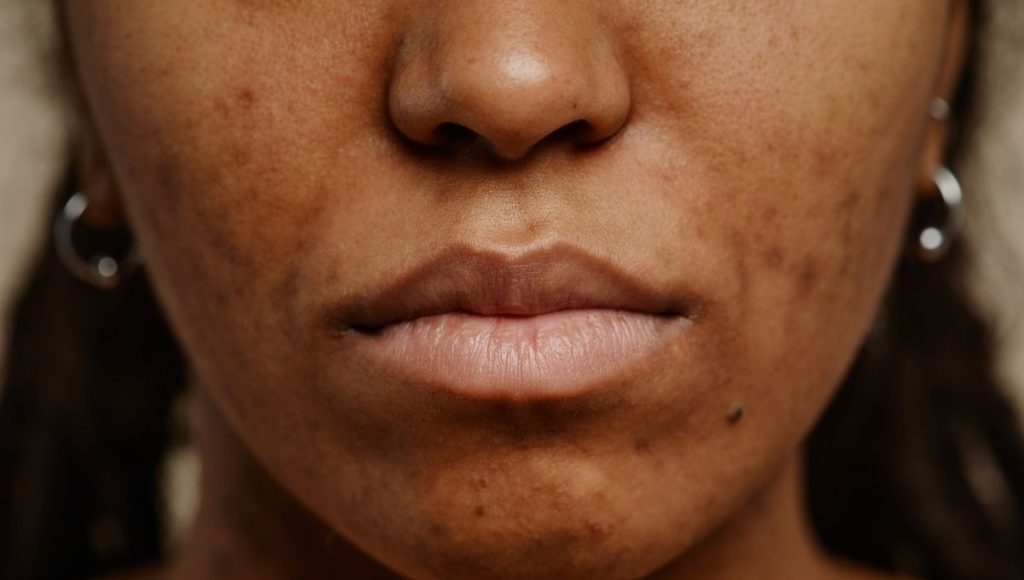
Before-and-after success depends on doing it right—not rushing through it. Let’s straighten out some of the most common blunders that may be slowing your progress (and your glow).
Skipping Sunscreen or Using Harsh Products
Sun damage will undo weeks—sometimes months—of progress. The same goes for layering random high-strength acids.
Common missteps:
- Forgetting sunscreen, especially after exfoliation
- Using glycolic, azelaic, and retinol all at once
- DIY lemon juice masks (just… no)
- Not moisturizing enough
Sunscreen isn’t optional—it’s non-negotiable.
Using Azelaic Acid Too Infrequently
You’ve gotta show up, even on tired days.
Tips to stay on track:
- Set reminders on your phone
- Keep products in sight and easy to reach
- Start with small areas if hesitant
- Layer like this: Toner → Azelaic Acid → Kojic Acid Serum, if using
Consistency is skincare currency 💸
Skincare Routine for Long-Term Maintenance After Fading Hyperpigmentation

Alright—you made it! Those dark patches are practically history. But keeping it that way? Also a skill worth mastering. Maintenance is where long-term beauty lives.
Post-Treatment Routine Recommendations
Stay gentle. You’ve worked hard—don’t reverse it.
Here’s what we recommend:
- Cleanse with mild, hydrating formulas
- Use serums with hyaluronic acid or niacinamide
- Exfoliate only 1–2 times per week, max
- Never skip SPF
That’s it. Simple, calming, and protective.
Transition from Treatment to Maintenance Products
Don’t ditch the actives entirely—instead, switch to a lower frequency.
Options to consider:
- Use Kojic Acid Facial Toner 3–4 times weekly
- Rotate in Lemon Turmeric Kojic Acid Exfoliating Pads just once weekly
- Reduce azelaic acid from twice to once daily
- Layer lightweight moisturizer for daytime hydration
You’re basically on autopilot now (but glowing!).
Conclusion
“Hyperpigmentation azelaic acid before and after” isn’t just about a photogenic difference—it’s about how you feel when your skin stops being at war with itself.
Azelaic acid is gentle, smart, and wildly underrated. Paired with kojic acid, glycolic acid, and supportive products like Triple Acid Facial Radiance Pads and Kojic Acid Serum, you’re set up for visible, touchable, lasting change.
Put it to the test. You might just come out with the best skin of your life.
Frequently Asked Questions (FAQs)
You may notice small changes within the first two weeks—like reduced redness or smoother texture. However, most people see visible before and after results around 4 to 8 weeks with consistent use. Remember to stay committed and use a complete routine, including sunscreen.
Yes! Pairing azelaic acid with kojic acid enhances pigment-fading power. We recommend using the Kojic Acid Serum alongside azelaic acid, especially on stubborn dark spots. Just ensure your skin tolerates both well by introducing them gradually.
The Triple Acid Facial Radiance Pads are ideal. They contain glycolic, lactic, and salicylic acids that gently exfoliate dead skin, prepping the skin to better absorb azelaic acid and boosting visible results.
Azelaic acid is flexible. You can use it in the morning or evening—just be sure to wear sunscreen during the day. Many users prefer nighttime for deeper penetration and to reduce potential for sun sensitivity from other products in their routine.
Try the Lemon Turmeric Kojic Acid Exfoliating Pads. With kojic acid, turmeric extract, and exfoliating agents, they brighten and improve texture fast—especially when included in a routine with azelaic acid.


